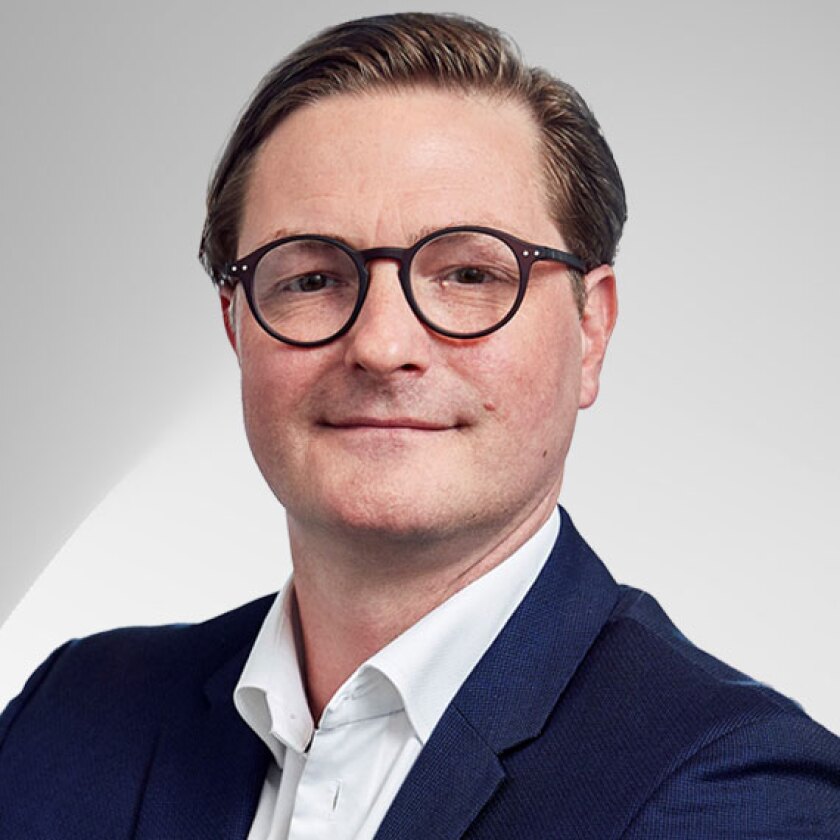Karsten Winther says that “Wars in Europe, inflation across the world, and an energy crisis across Europe,” are a few of the considerable hurdles he faced in the short time he has been Vertiv’s president for the EMEA region.
Winther, who joined Vertiv in 2018, boasts more than 20 years of experience in the tech industry in management, sales and marketing functions, which feature a strong focus on channel and vertical markets. He was promoted to his current position in March 2022, after spending the previous four years working with Giordano Albertazzi – then president for EMEA – as vice-president of sales EMEA, during which time he was been deeply involved in many of the improvements Vertiv carried out.
“I’ve been quite fortunate, to be honest with you,” says Winther.
Winther says the transition when he took over from Albertazzi, who was appointed president of Americas, and is to take over as chief executive in January 2023, was “seamless”, as Albertazzi “left the shop in very good shape, and what he left behind was a company that had great processes in place”.
These solid foundations became crucial to Winther, as he faced the challenges this year brought.
External factors
When Russia invaded Ukraine on February 24, Vertiv had to rethink the part of its supply chain which originated in China but came through Russia. Winther believes that the company’s ability to change its supply route in response to the conflict was down to how it adapted to Covid-19.
“We did have a lot of shortages on various supplies,” Winther says, adding that Vertiv could not feed its factories as fast as it wanted to. “I think we’ve overcome that.”
Initially, a lot of Winther’s focus was taken up by concerns that the war and the impact of inflation on several industries across Europe would mean Vertiv would be unable to deliver to its customers on time. He says that overcoming those headwinds has seen Vertiv normalise some of the concerns the industry is holding while coming out of the pandemic.
Now, Vertiv is heading into 2023 off the back of strong financial results: 20.5% growth in third quarter sales, an operating profit of US$80 million, and an adjusted operating profit of US$134 million. The company’s outgoing CEO Rob Johnson said these results were consistent with Vertiv’s reaffirmed operating profit guidance, and an updated forecast that reflected continued strong demand for Vertiv’s products, improved navigation of supply chain constraints, and progress in meeting its pricing plan.
“As I prepare to retire at year-end… Vertiv is on solid footing and well positioned for a strong performance in 2023 under Giordano’s capable leadership,” Johnson said.
A key area
Vertiv recently released its Guide to Data Center Sustainability, an online resource for data centre owners and operators looking to reduce their facilities’ environmental impacts. A report by the International Energy Agency (IEA) indicates that data centres account for around 1% of global electricity demand.
The IEA’s report says that prior to 2020, the data centre industry had been able to limit the impact of capacity growth on energy consumption by improving operating efficiencies. Then in 2020, global internet traffic rose by more than 35% according to TeleGeography. This sharp increase could lead to a 13% compound annual growth rate in data centre construction in the coming years.
“You’ll see that [sustainability] is one of the key areas we can never ignore,” says Winther. “And there is a strong desire to overcome burdens in a sustainable way.”
Winther says that Vertiv is taking an active role in discussions around how the data centre industry can form a more sustainable focus by reducing its carbon footprint. He says there are several elements to consider when discussing sustainability as an overall issue, including direct elements, such as finding innovative solutions to reducing carbon footprints and ensuring that materials are sourced locally, and through indirect elements, such as helping customers reduce their respective carbon footprints.
“I will say all the technological innovations that we’re deploying, and that we’ll deploy in the next six to 12 months, will help our customers with that,” Winther says, giving chilled water and liquid cooling systems as examples of solutions Vertiv plans to bring to the market. “We must also develop ways to drive everything for the customer base, and that includes in some of our already installed sites.”
Winther is vocal about the challenges the industry faces from the ongoing climate emergency.
During the record-breaking heatwaves in August, Vertiv warned that “extreme heat is taking a major toll on data centre operations and infrastructure”, citing the outages and disruption in the UK, French power plants cutting production, and concerns over water use in drought-affected areas. At the time, Winther said: “If one thing is clear, it’s that we need to be prepared for these extreme weather conditions to become more commonplace, so adapting to this inevitability is crucial.”
His counsel came as GlobalData issued its own warning to data centre operators, water companies and local authorities, that they are all facing pressures due to water resources drying up.
Vertiv also suggested that data centre operators should reduce the load on each cooling unit, keep refrigerant pressures at lower levels, and schedule regular maintenance, including quarterly preventative maintenance.
Specific focus
The position of president of EMEA for Vertiv covers a broad footprint. Winther says the company continues to see “good growth” in all locations within EMEA’s regions, but there are also a number of emerging territories where it is seeing increasing interest from local enterprises and hyperscalers.
“Africa, I believe, is one area where there’s a strong focus on the entire [data centre] industry,” says Winther.
In mid-2021, Africa accounted for less than 1% of global colocation data centre supply, but this is forecast to grow by around 25% by 2023, according to advisory and research firm Xalam Analytics.
Revenue from Africa’s data centre market, meanwhile, is expected to expand at a compound annual growth rate of 12% from 2019 to 2025 to reach £3 billion, according to the Data Centres in Africa Focus Report compiled by Oxford Business Group and the Africa Data Centres Association. As a result, Winther says Vertiv will be increasing its focus on the continent in the months and years ahead.
“We used to have one region called the Middle East and Africa, but we’re now decoupling these two,” Winther says. “We’re doing that… to create a specific focus on the Middle East and a specific focus on Africa.”
Winther says that while there are similarities between the two regions, they have many differences and so customer needs also fluctuate. Therefore, Vertiv is working on growth initiatives which are “very different” for these two emerging data centre territories.
“If I were to highlight Africa, it’s a continent with more than 50 countries and there’s a dramatic growth opportunity for us there,” Winther says. “It’s an area where we could see a jump from 3G straight to 5G rollouts. And with that comes several applications that could benefit the population and companies [searching for growth].”
Despite its vast potential, Winther remains both coy and realistic about Vertiv’s activities in Africa in the coming months. He maintains that while the company will not be active in all of the continent’s countries, it will continue to take a “tangible” approach.
This means Vertiv will treat Africa as one of its main focus territories moving forward and will gradually “ramp up” its resources there.
“I’d say we’ll invest quite a lot in Africa in the coming years, and we’re expecting it to be very well received by our customer base,” says Winther.
On the edge
Going into 2023, Vertiv is still focusing on driving its ability to provide solutions for critical infrastructure for all of its customers.
“Whether that’s applications in the collocated space, various applications in the metaverse, or trying to feed the edge that is now growing,” Winther says.
Moving forward, Winther says a key trend to watch for is edge computing. “I think it’s fair to say that many industry players have been waiting for the edge to fully take off,” he adds.
Edge computing solves a myriad of organisational needs and can be used across industries, such as healthcare, education and retail. Its infrastructure can be placed within an enterprise’s premises, while being managed or hosted by service providers. The main benefits of edge solutions include low latency, high bandwidth, device processing and data offload, as well as trusted computing and storage.
Global spending on edge computing will reportedly reach around US$250 billion in 2024, while Vertiv’s Data Center 2025: Closer to the Edge survey says that participants expect a 400% growth in their edge sites.
Given the exponential increase in the volume, variety, velocity and variability of data, Winther expects several companies to tap into the edge more frequently. And as the adoption of edge solutions is becoming more widespread by the month, Winther believes it is a key trend the data centre industry should watch.






